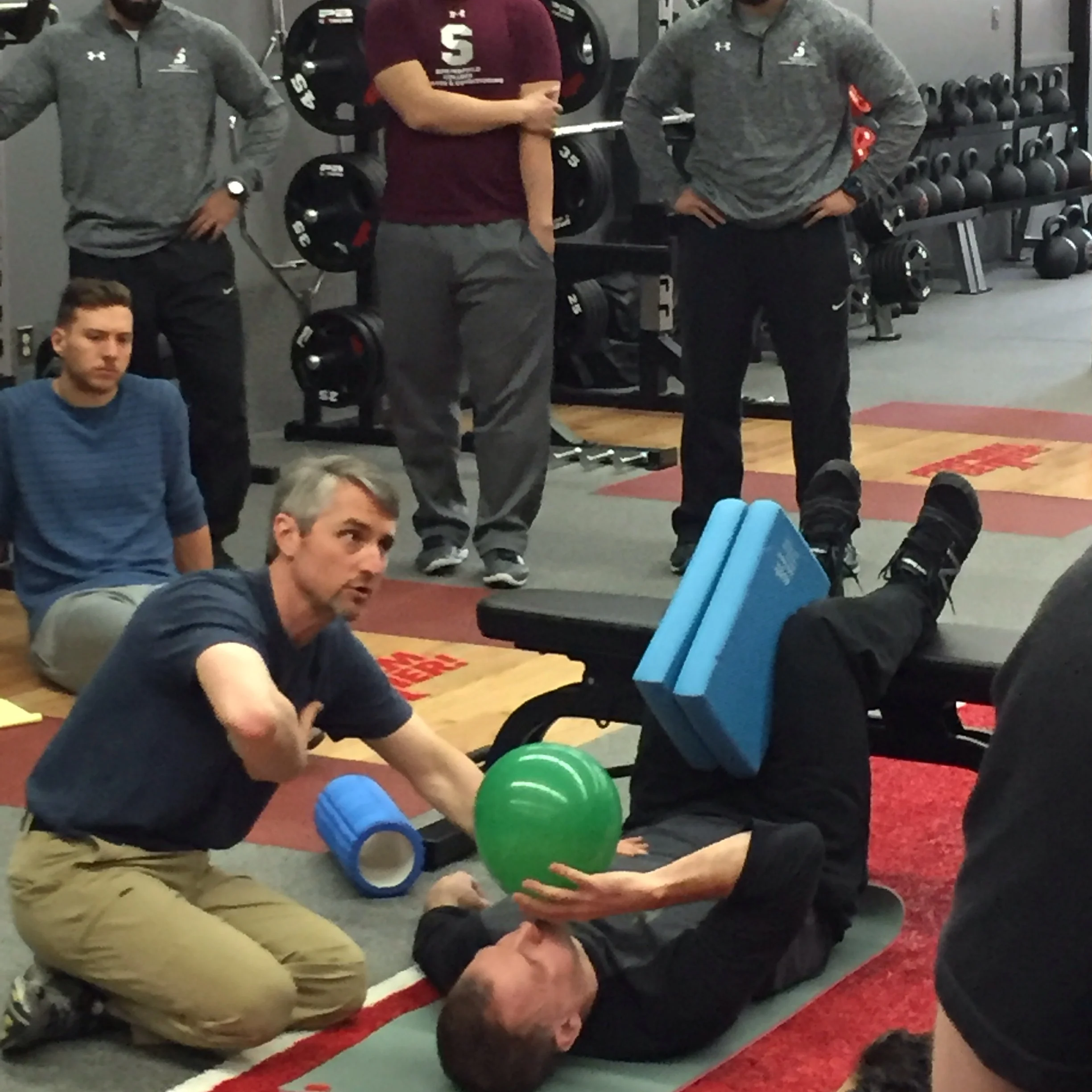How our diaphragm can run our lives
I recently read this excellent research review titled Anatomic Connections of the Diaphragm: Influence of Respiration on the Body System by Bruno Bordoni and Emiliano Zanier in the Journal of Multidisciplinary Healthcare (2013). While I have had the long-held belief that the diaphragm has a significant influence on many aspects of our bodily functions, this article does a very nice job of highlighting and correlating a number of these observations clinically. I thought I would highlight some of the more interesting pieces.
"The lumbar section derives from the medial, intermedial, and lateral diaphragmatic pillars, and it is important to emphasize the fact that the main pillars, ie, the medial and lateral pillars, make contact with the retropericardial and the perinephric tract, and their related fat. This is important for two reasons: first, it is a further demonstration of the continuous connection existing between the various body structures, and second, the visceral fat is a source of proprioceptive information from the diaphragm itself, and establishes once more the role played by this organ in affecting structures that are distant from each other."
More information demonstrating the number of different areas our brains receive afferent information from within our body, proprioceptively, interoceptively, etc. and how the diaphragm may actually become a bigger source of providing this feedback than previously thought.
diaphragm cadaver
"The right medial pillar, which is thicker and longer than its lateral counterpart, becomes a flat tendon that ends on the anterior side of L2–L3, and at times, L4. The left medial pillar terminates as a flat tendon between L2 and L3."
Remember the variability of anatomic connections from person to person. While many have strong asymmetrical crural attachments to the lumber spine influencing pull, others it may not be as significant of a factor.
"With reference to neurology, the phrenic nerve along its pathway anastomoses with the vagus, while the vagus runs through the crural region of the diaphragm, innervating this area. It is generally believed that the esophageal afferents of the vagus exert an inhibitory influence on the medullary and phrenic motor neurons. If there is a problem in the diaphragm or phrenic nerve, the whole system that controls the crural region is negatively affected, causing esophageal reflux and/or swallowing problems."
phrenic vagal nerves cadaver
"This brief description demonstrates how the diaphragm is both an important exchange point of information, originating in different areas of the body, and a source of information in itself."
Important to remember that the diaphragm can influence, and is influenced by, dysfunction to and from many different areas. It is a messenger, and while it may be a large part of any dysfunction, it should be perceived as merely following orders so....
"Therefore, if there is a phrenic disorder, it is possible to contract the subclavius muscle, raising the first rib and reproducing a thoracic outlet syndrome, with the relevant symptomatology....There is a close link between the diaphragm and the thoracic outlet."
Brings whole new meaning to the "elevated first rib" I learned about in school. Most often it will not be isolated to just the first rib. And why is the subclavius seldom mentioned when it comes to TOS?
Great article by Jasdon Robey and Kyndy Boyle on this titled: Bilateral Thoracic Outlet Syndrome in a Collegiate Football Player
ThoracicOutletSyndrome
"Another matter to consider is the connection between the respiratory and pelvic diaphragms. During normal respiration, or in the event of coughing or any other physiologic diaphragmatic alteration, a symmetric change in the pelvic floor can be observed. For instance, IF (my emphasis) during inspiration the main inspiratory muscle descends, there will be a corresponding lowering of the pelvic floor. This means that respiration needs to be supported by the pelvic floor in order to control the pressure of intra-abdominal fluid properly. It is probable that these same areas, which are connected to the motor neurons of the floor of the mouth, send the premotor impulse to the pelvic zone."
All the domes of our pelvis, thorax and cranium are physiologically and mechanistically connected.
Look at all them domes....
"Various studies have established that, before inhalation, electrical activity can be observed in the muscles of the pelvic floor, and the same electrical activity is traceable for the transverse and obliquus internus abdominis muscles.....In regular respiration, the genioglossus and other muscles of the floor of the mouth, such as the hypoglossus, are electrically involved in coordination with the diaphragm, immediately before contraction of the diaphragm itself."
Lots going on above in the cranium and below in the pelvis just prior to inhalation. If the timing is off.....
Another reason mouth breathing is a problem.
"Houston, we've lost contact of our contacts...."
"If there is a problem in the diaphragm or phrenic nerve, the whole system that controls the crural region is negatively affected, causing esophageal reflux and/or swallowing problems."
Suggesting a strong link between diaphragmatic dysfunction, even minimally, and esophogeal dysfunction, swallowing issues, GERD, reflux, IBS, vocal cord dysfunction, etc.)
" This means that diaphragmatic dysfunction produces symptoms that are observable in the region of the cervical base, in the floor of the mouth, and in the dura, as well as in the eyes. Another possible symptom of diaphragmatic dysfunction is pain in the cranium, which can affect the ocular globe."
Possible (likely) relationship between chronic headaches, migraines, cervical issues, post-concussive issues, visual issues, lightheadedness, etc. and diaphragm issues, at times idiopathically.
What do you think, diaphragm issue creating ocular globe issues?
"With regard to symptoms, we can hypothesize that the phrenic nerve can affect the spinal trigeminal ganglia, which will stimulate the last two branches of the trigeminal nerve, reaching the periodontal ligaments through the alveolar nerves, and that the result will be dental pain. The same pathway may lead to pain in the temporomandibular joint and the ear through the ganglion of Gasser. "
'Nuff said on that....
"Lymphatic flow, helped by diaphragmatic contractile activity, leads from the peripheral diaphragm to the central tendon, with respect to the peritoneal surface.Lymphatic absorption firstly depends on the rhythmicity and stretching of the diaphragm, then on intraperitoneal pressure and the posture of the individual.These concepts are important because they exemplify how incorrect functionality of the diaphragm, for any reason, can negatively affect the lymphatic system."
Proper mechanics of the most central pump in our body directly influences the other pumps as well.
"The diaphragm muscle not only plays a role in respiration but also has many roles affecting the health of the body. It is important for posture, for proper organ function, and for the pelvis and floor of the mouth. It is important for the cervical spine and trigeminal system, as well as for the thoracic outlet. It is also of vital importance in the vascular and lymphatic systems. The diaphragm muscle should not be seen as a segment but as part of a body system. To arrive at correct therapeutic strategies, we must see the whole and all the links highlighted in this paper...."
Brilliant summation.
In closing, please make managing diaphragmatic control and breathing pattern disorders part of your regular intervention strategies, both in response and as training to reduce the propensity to issues in the future.


















